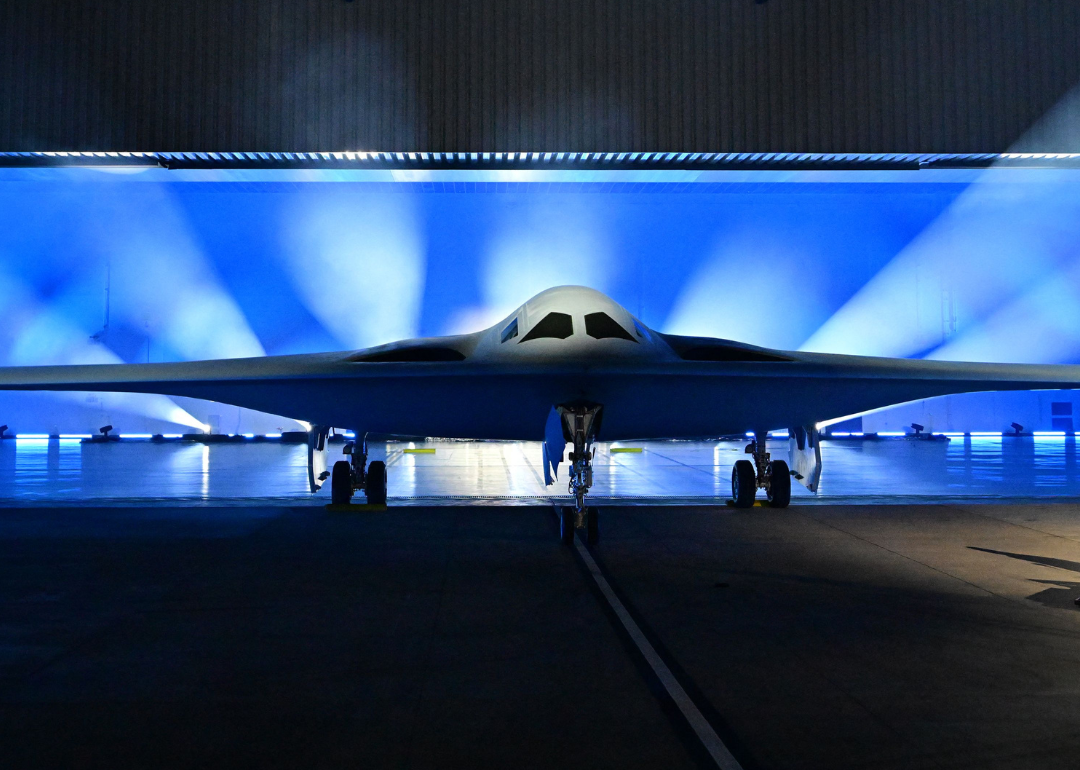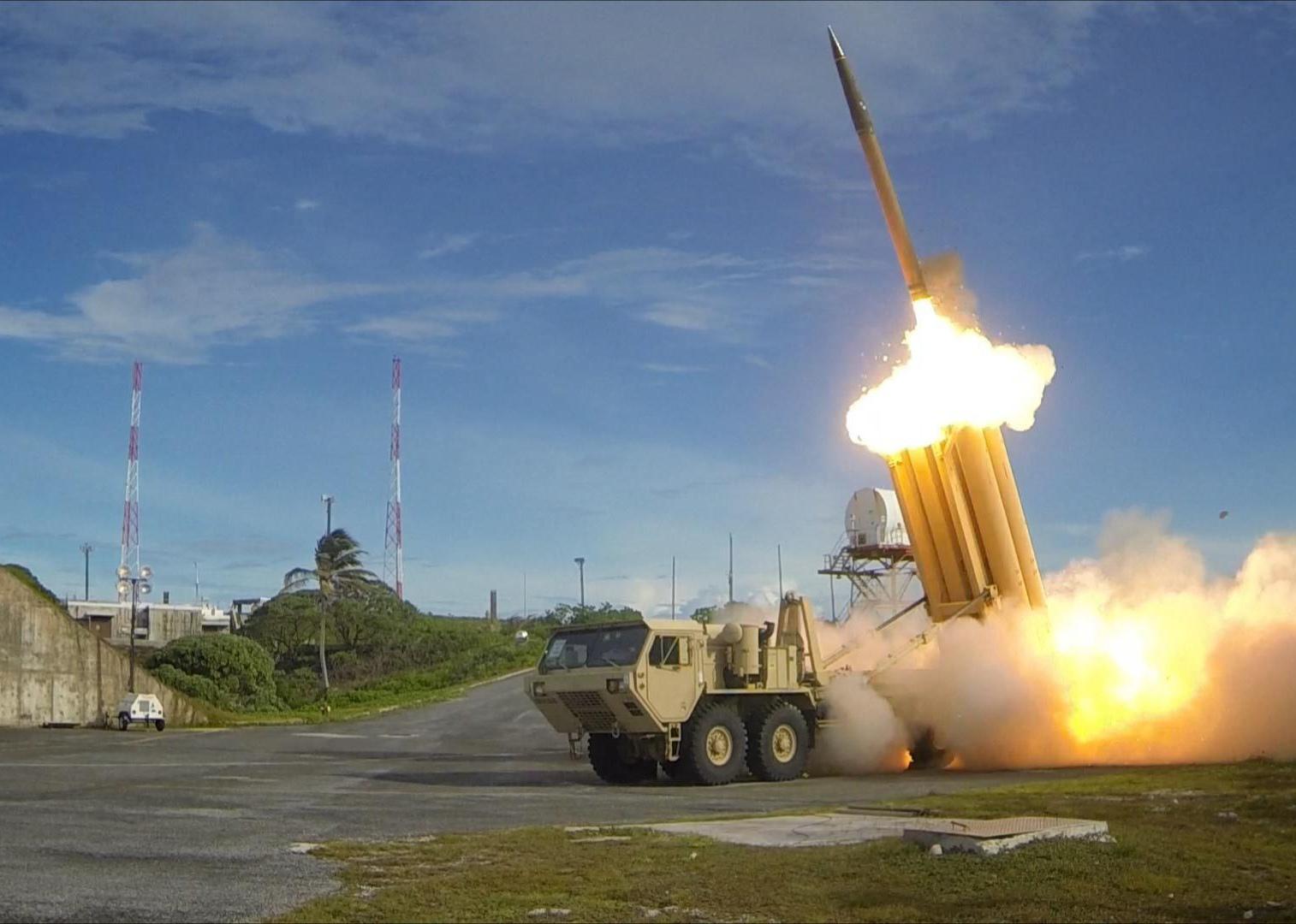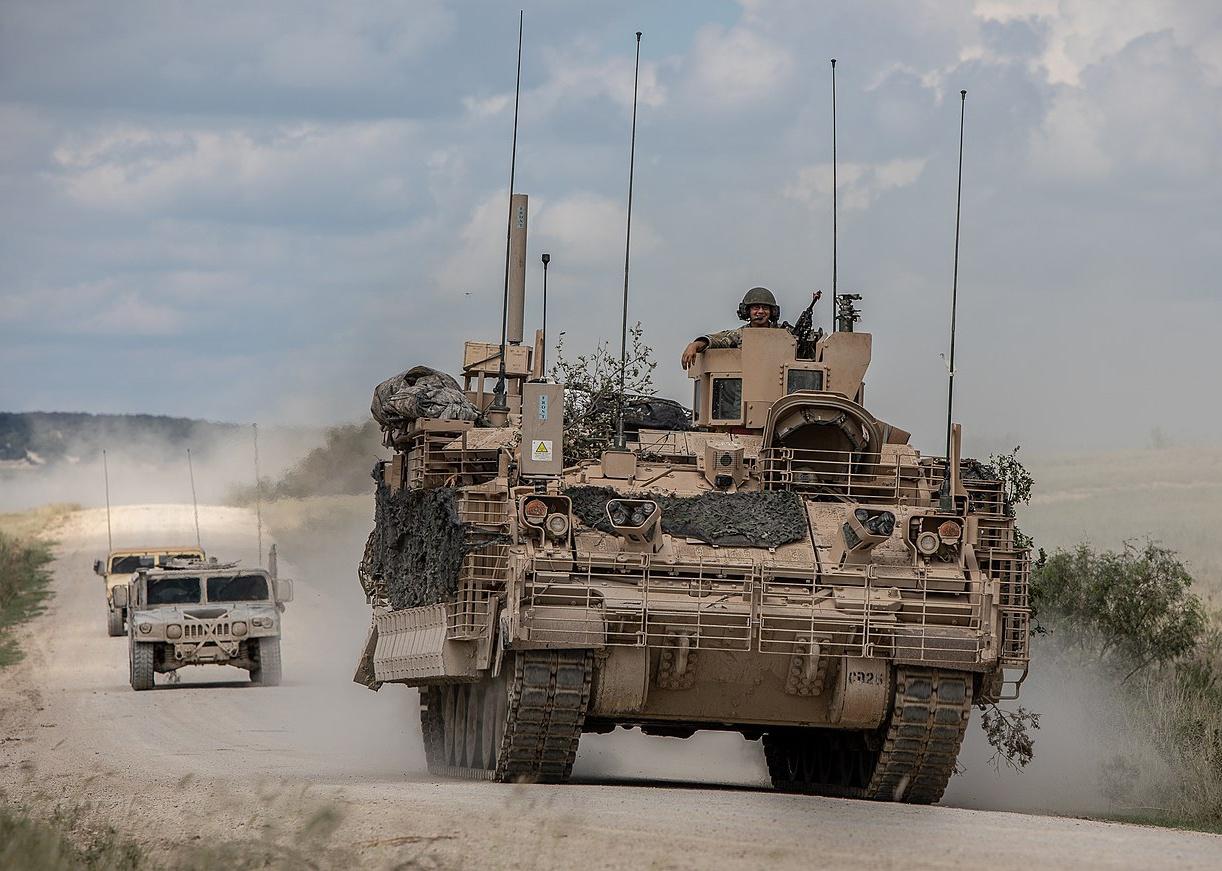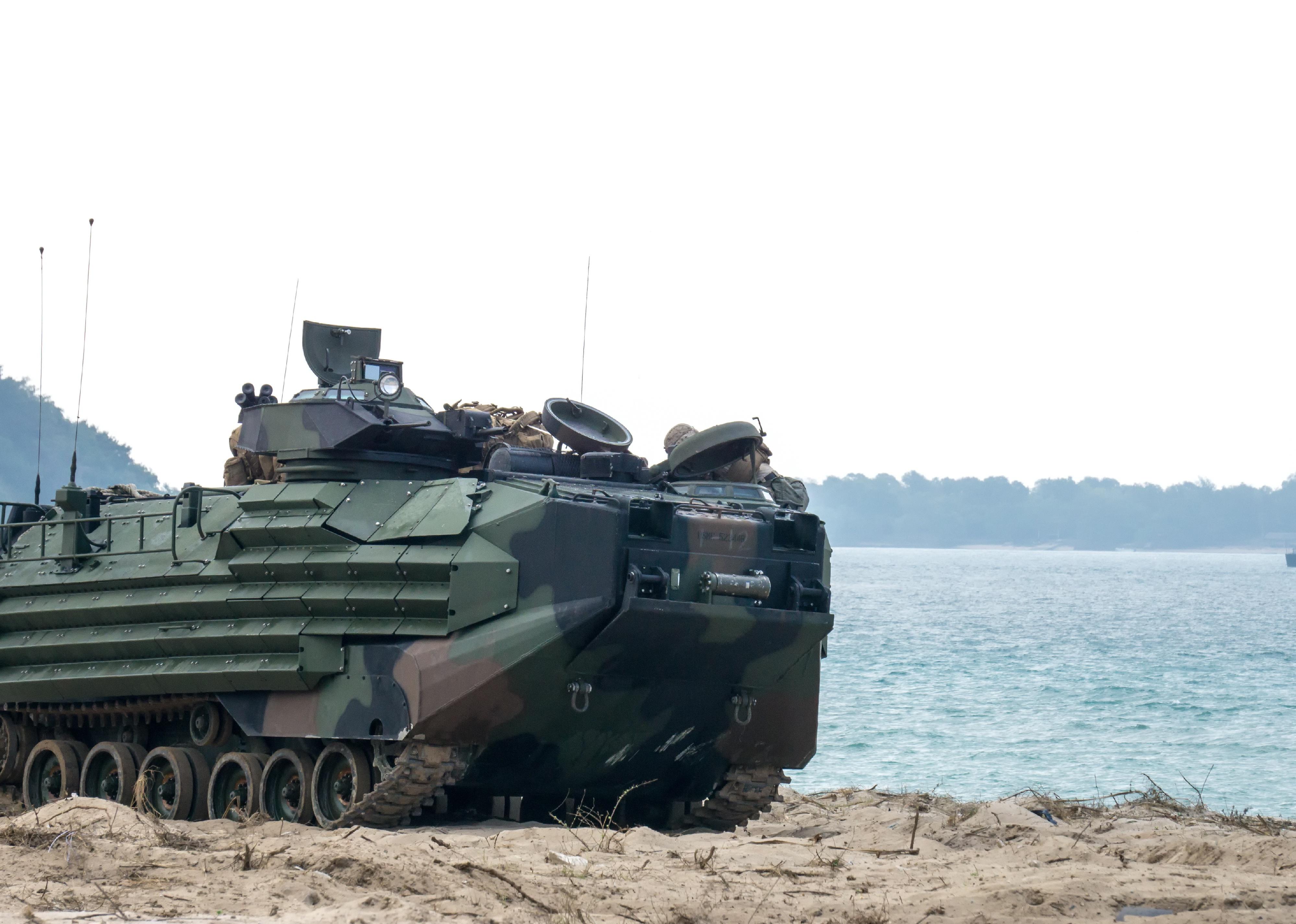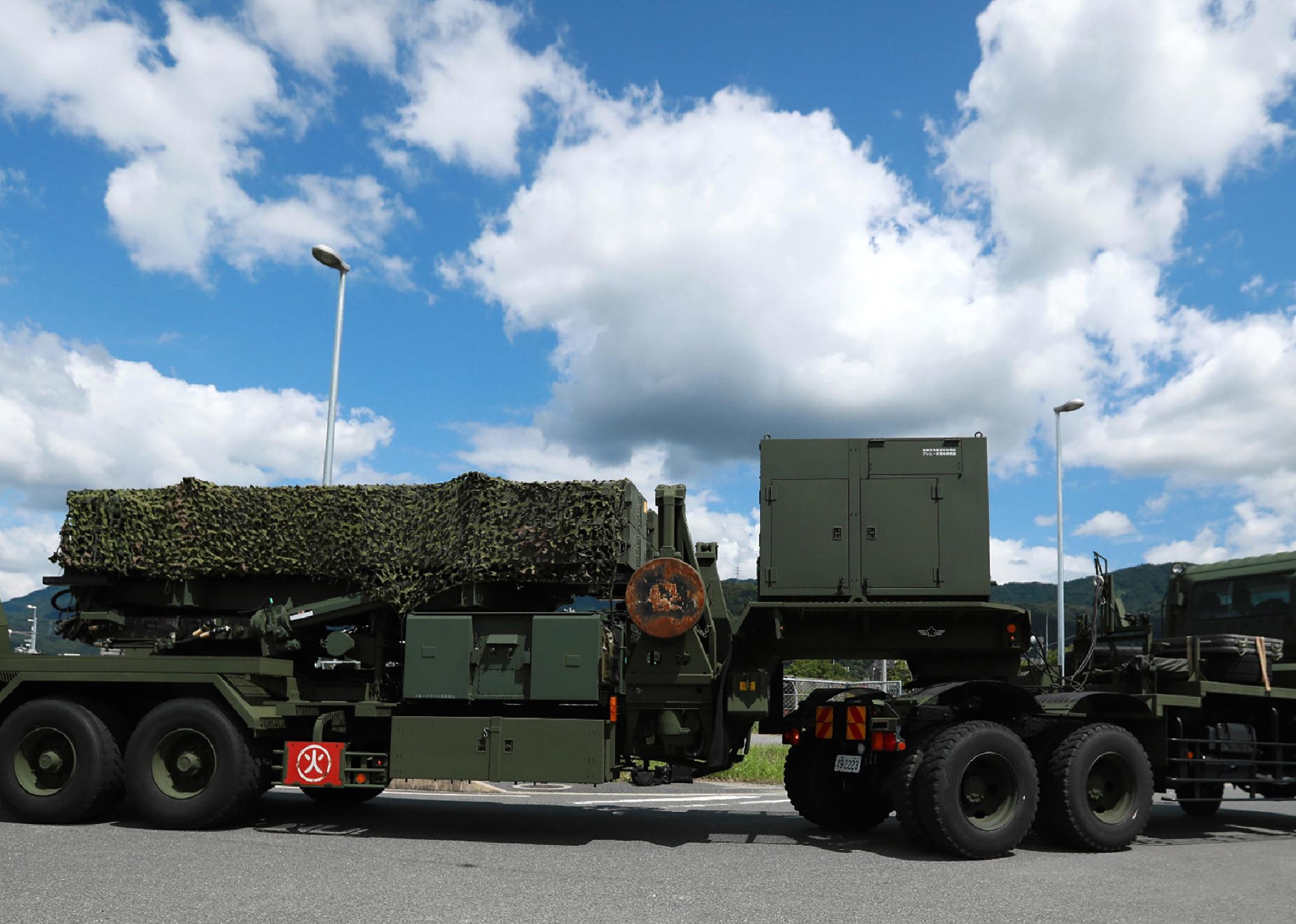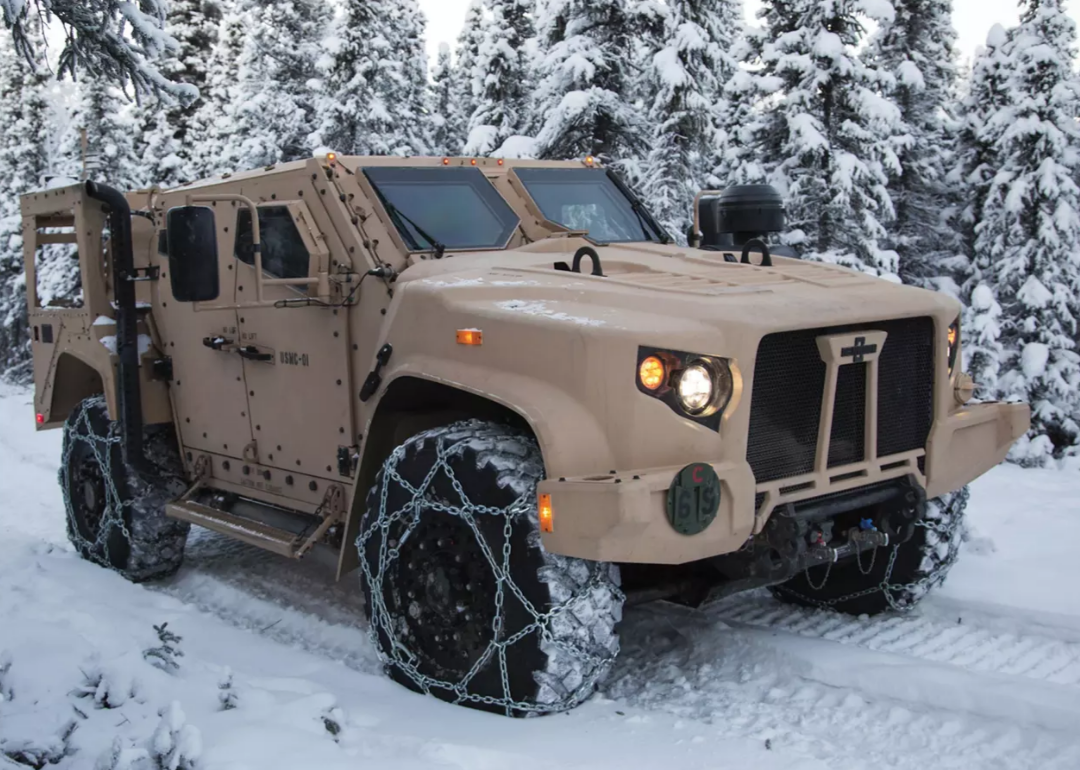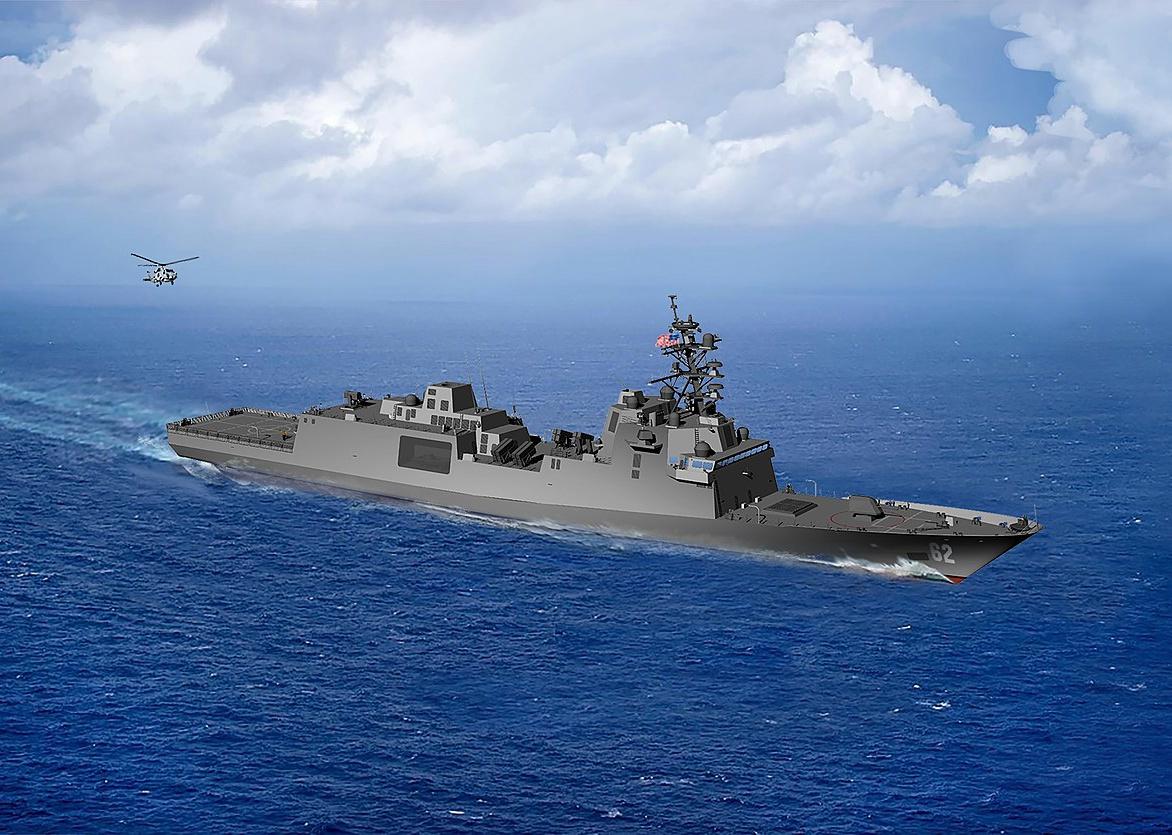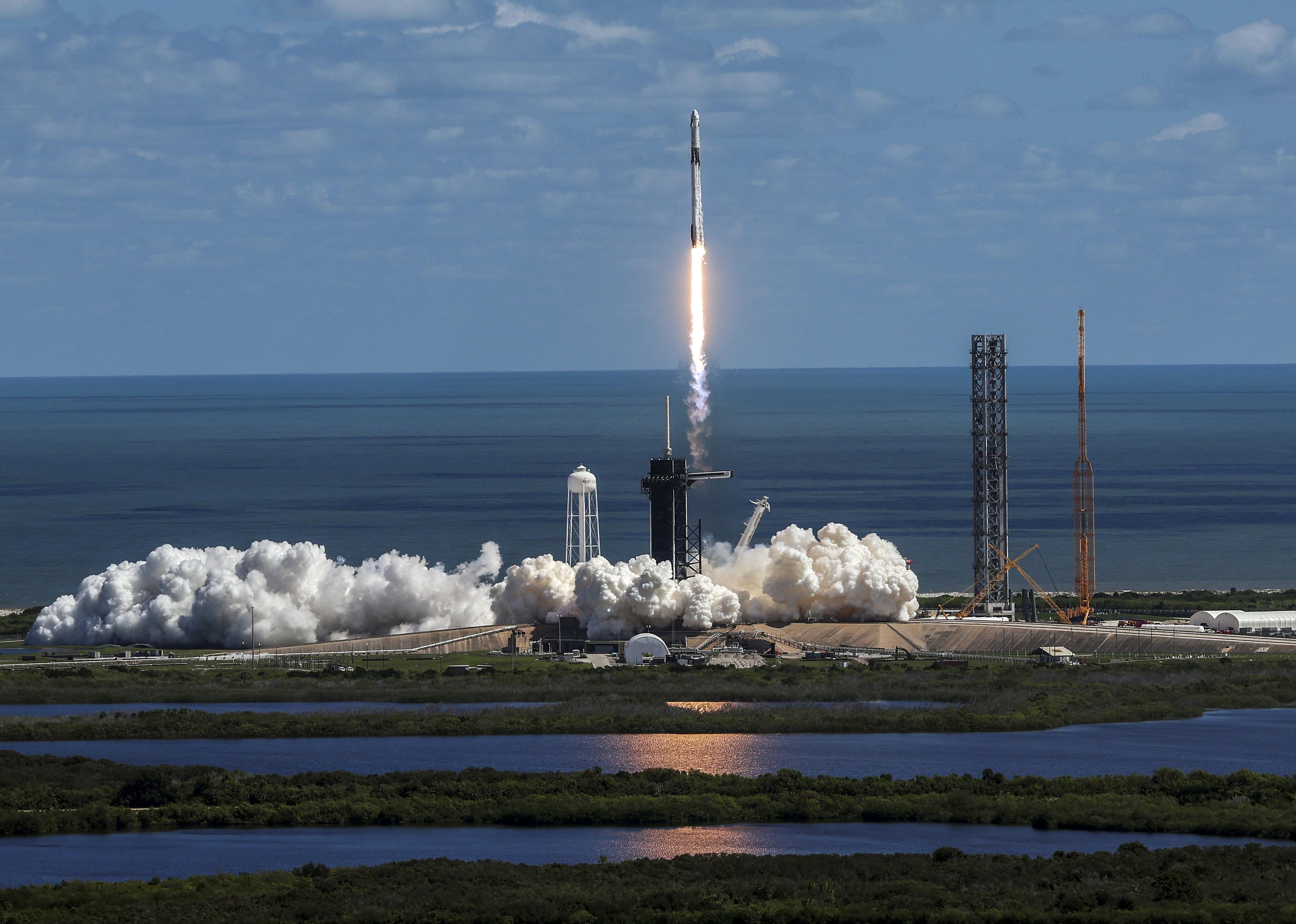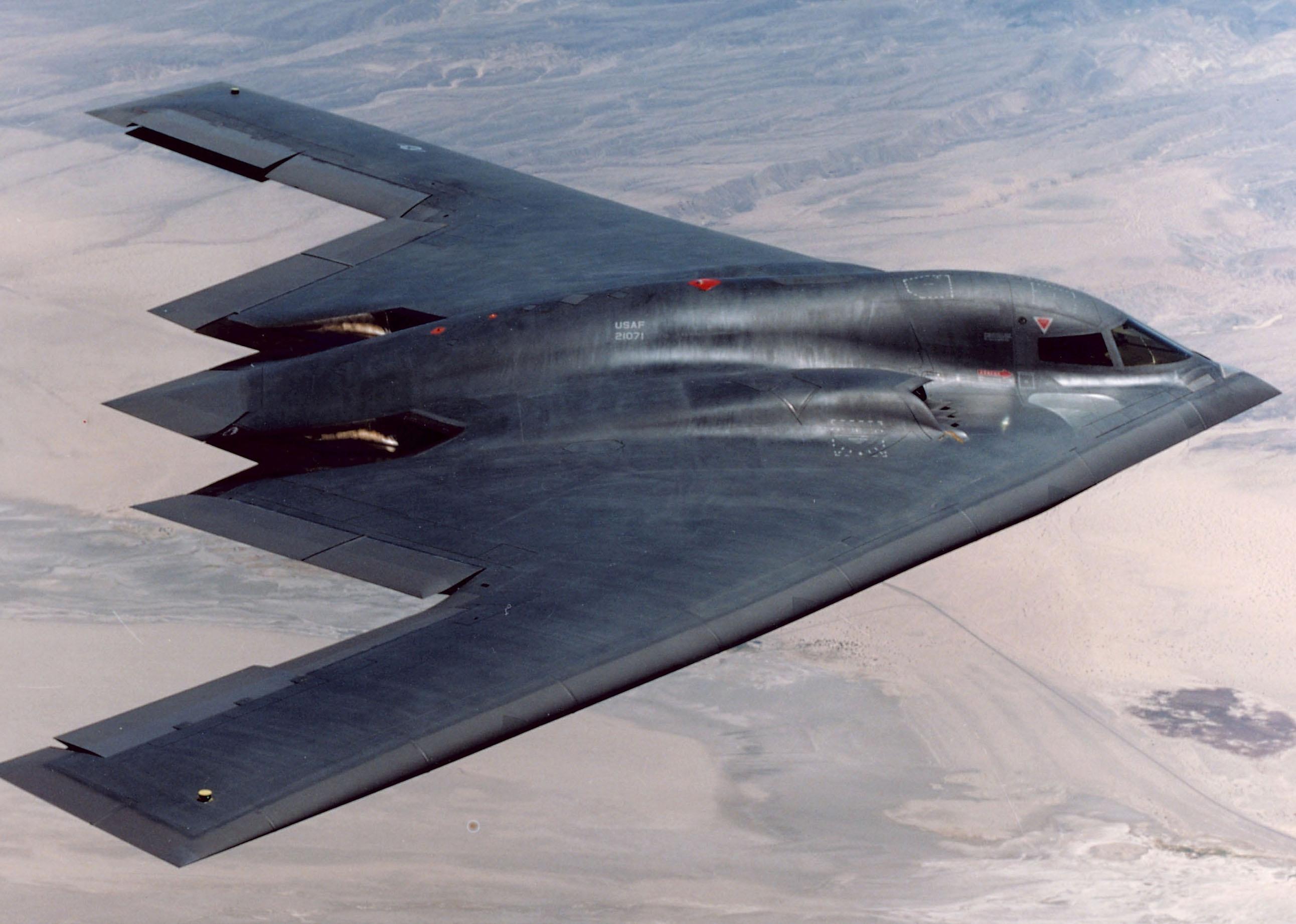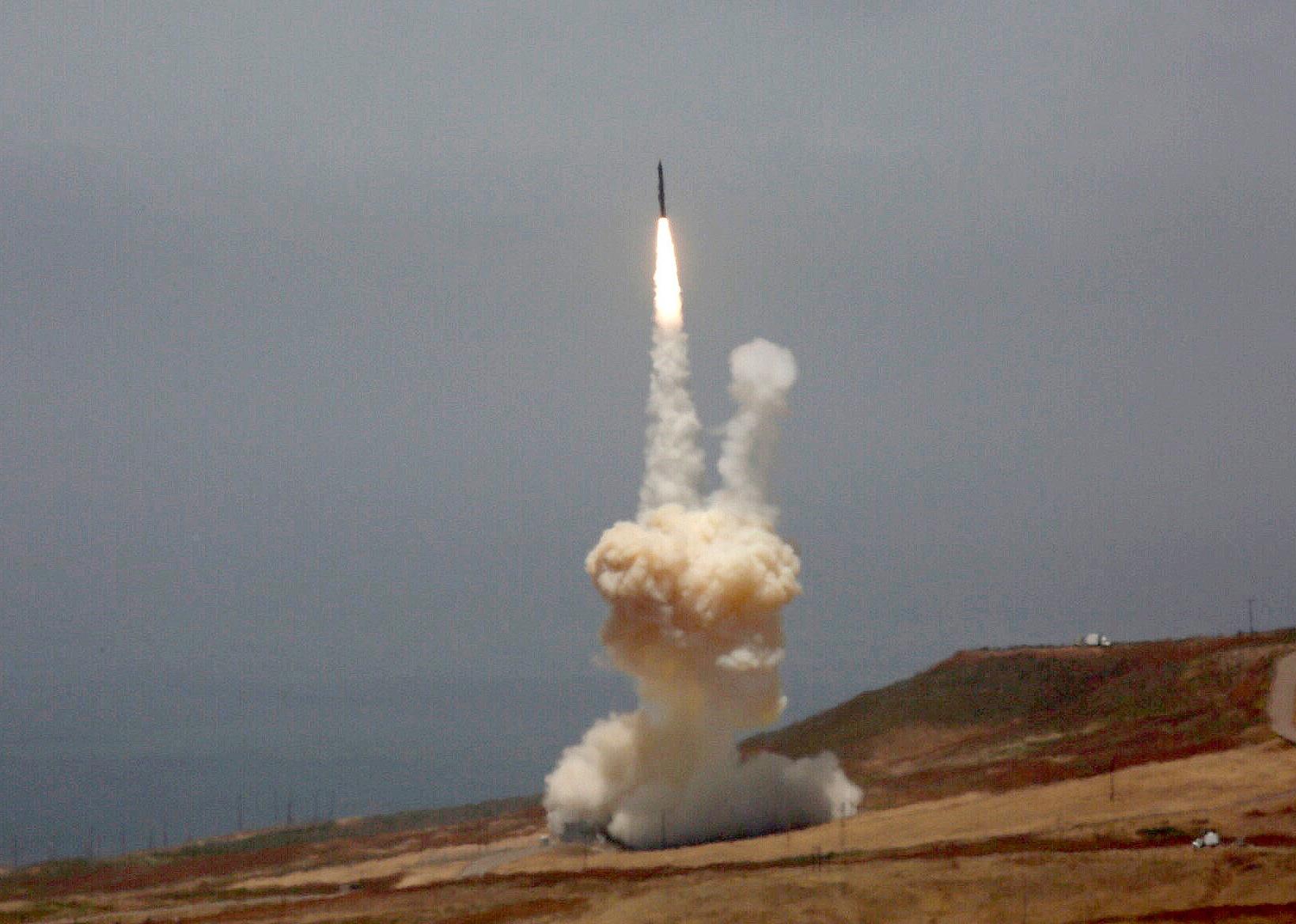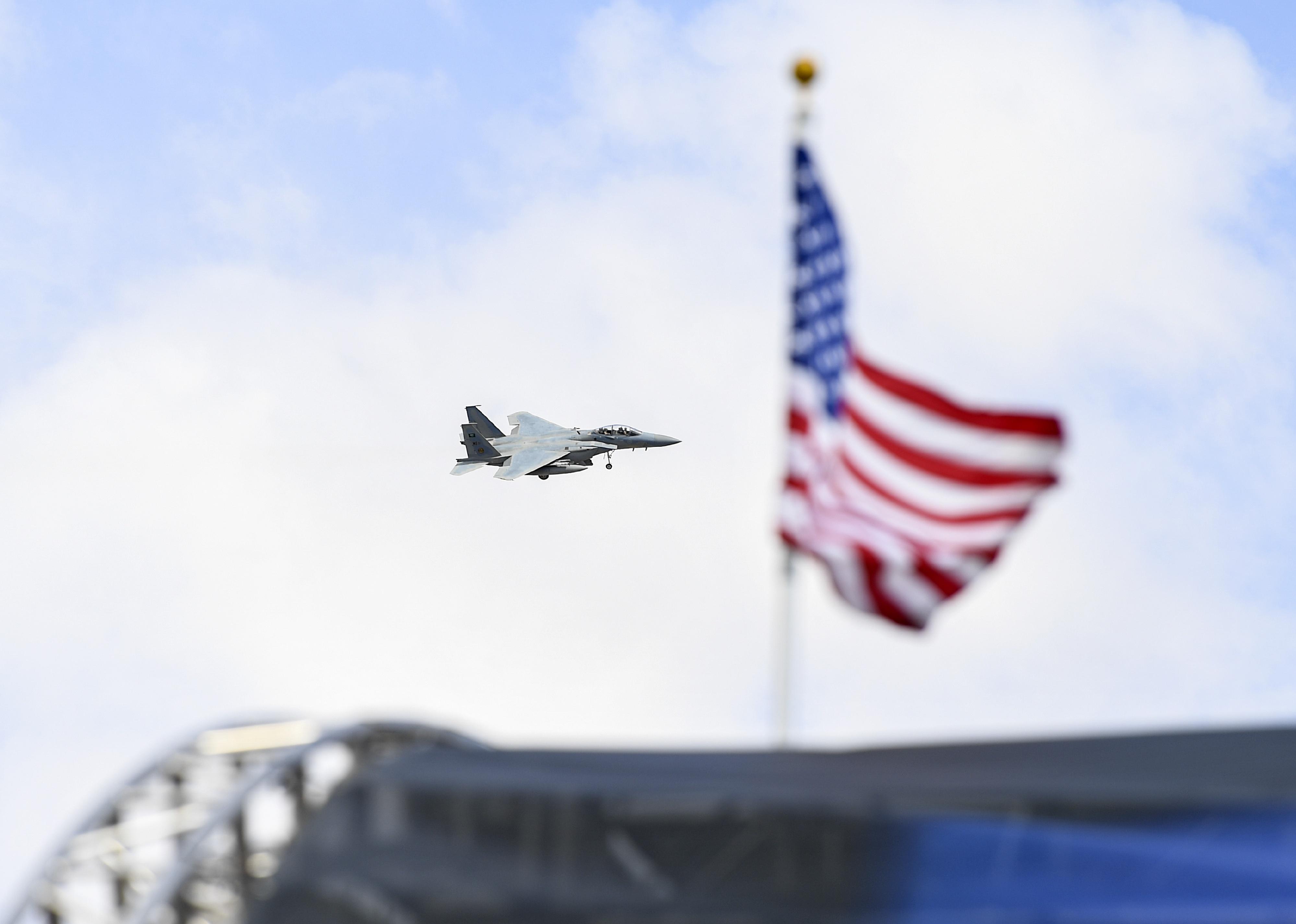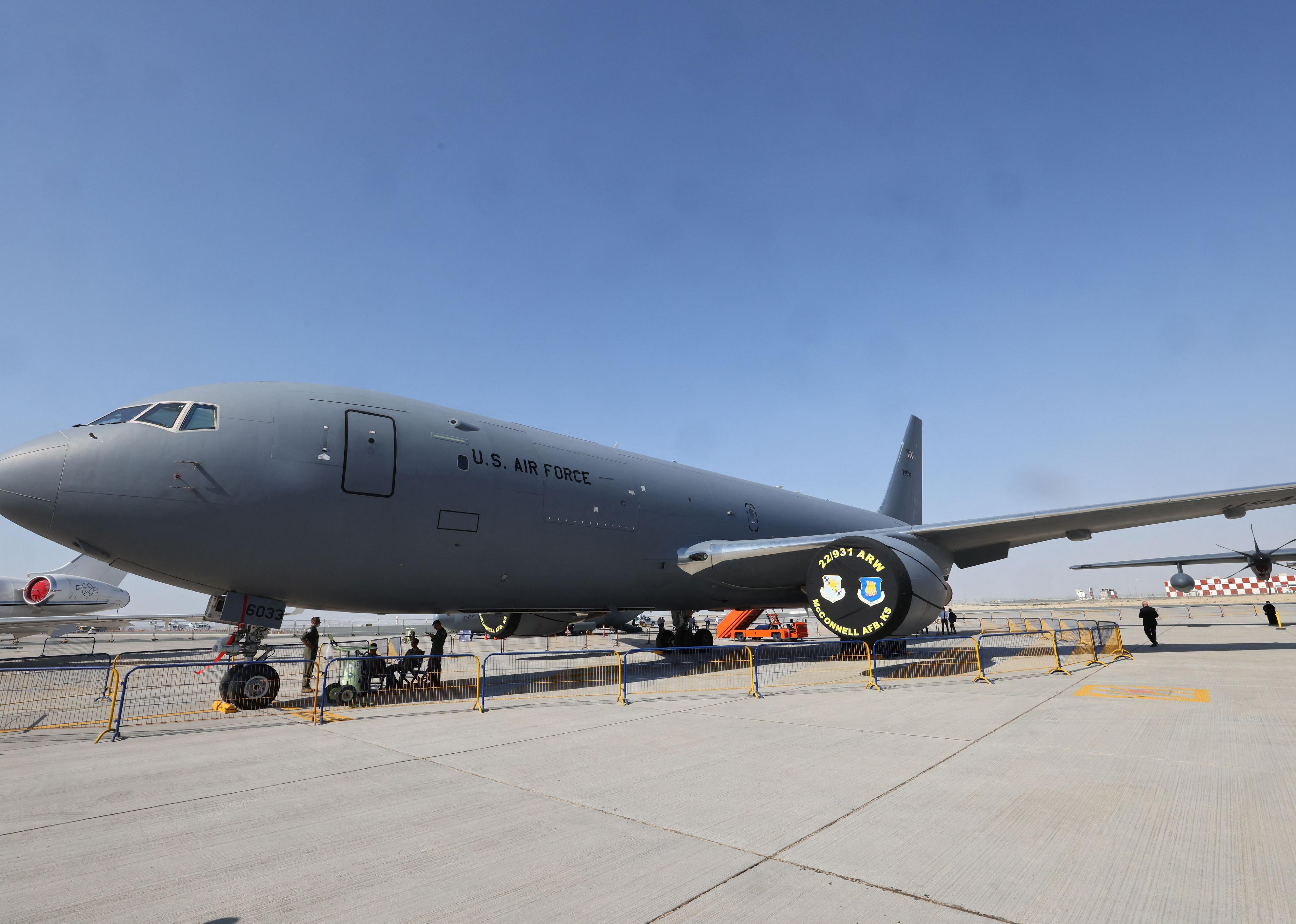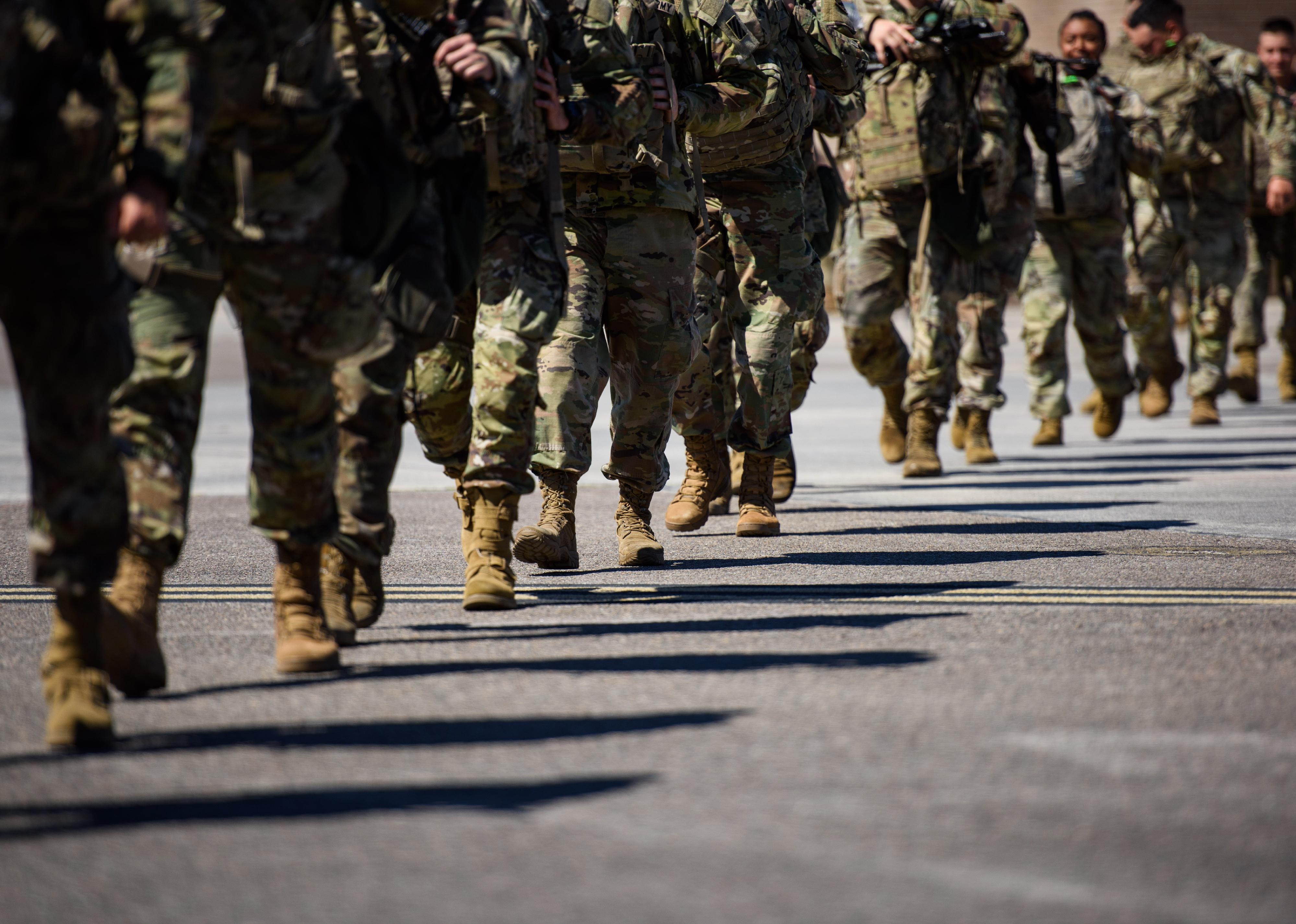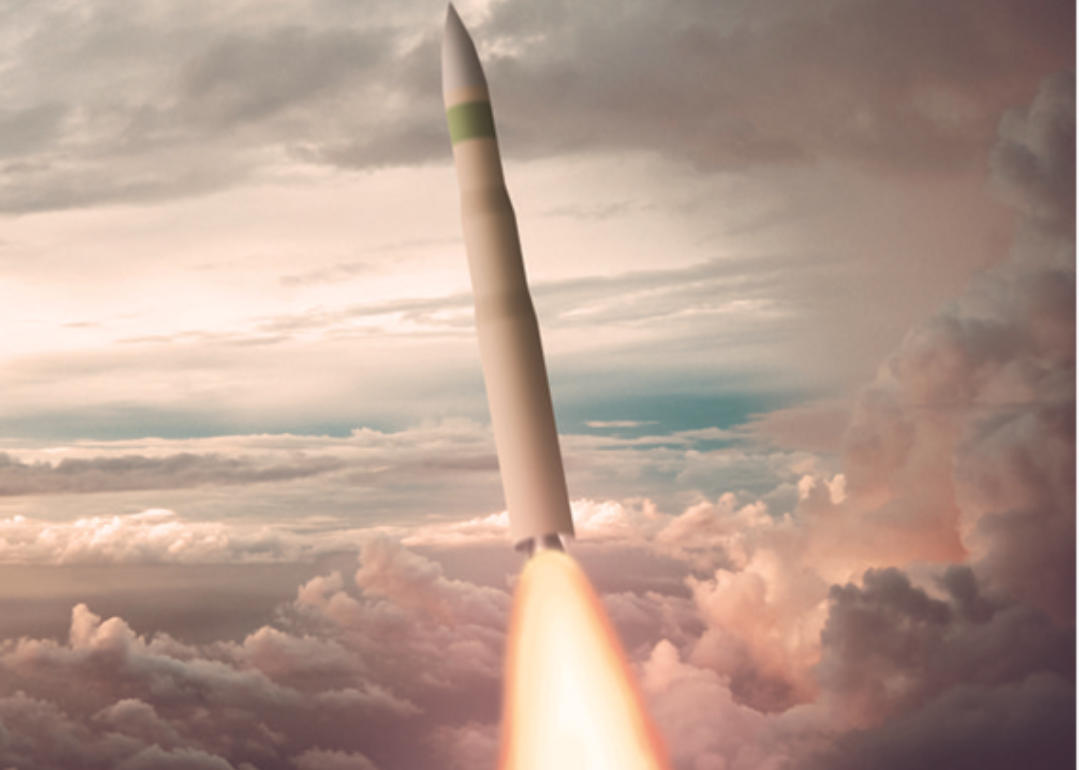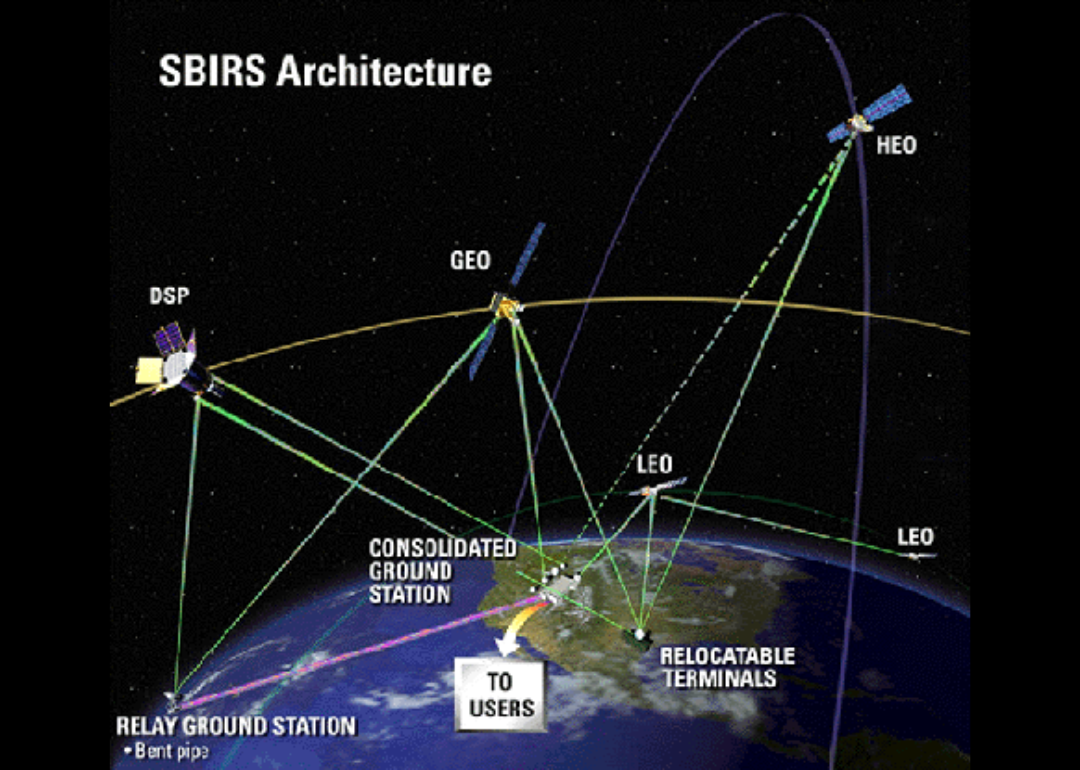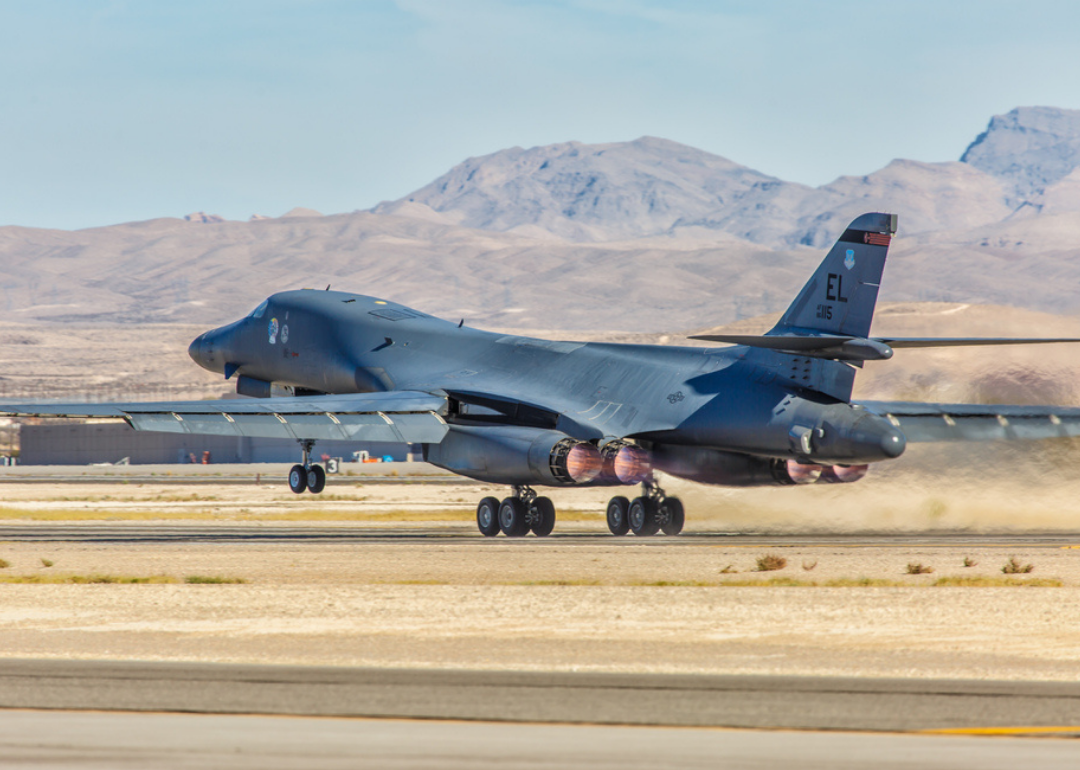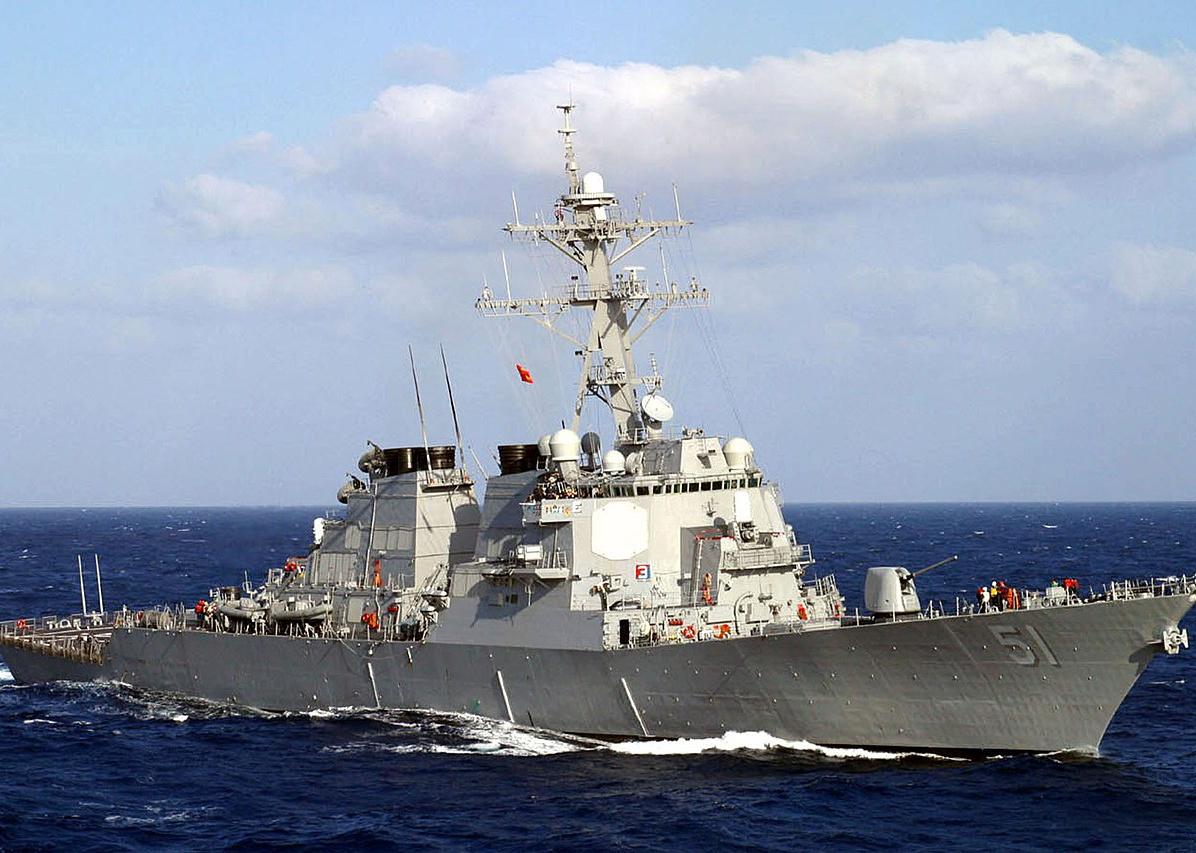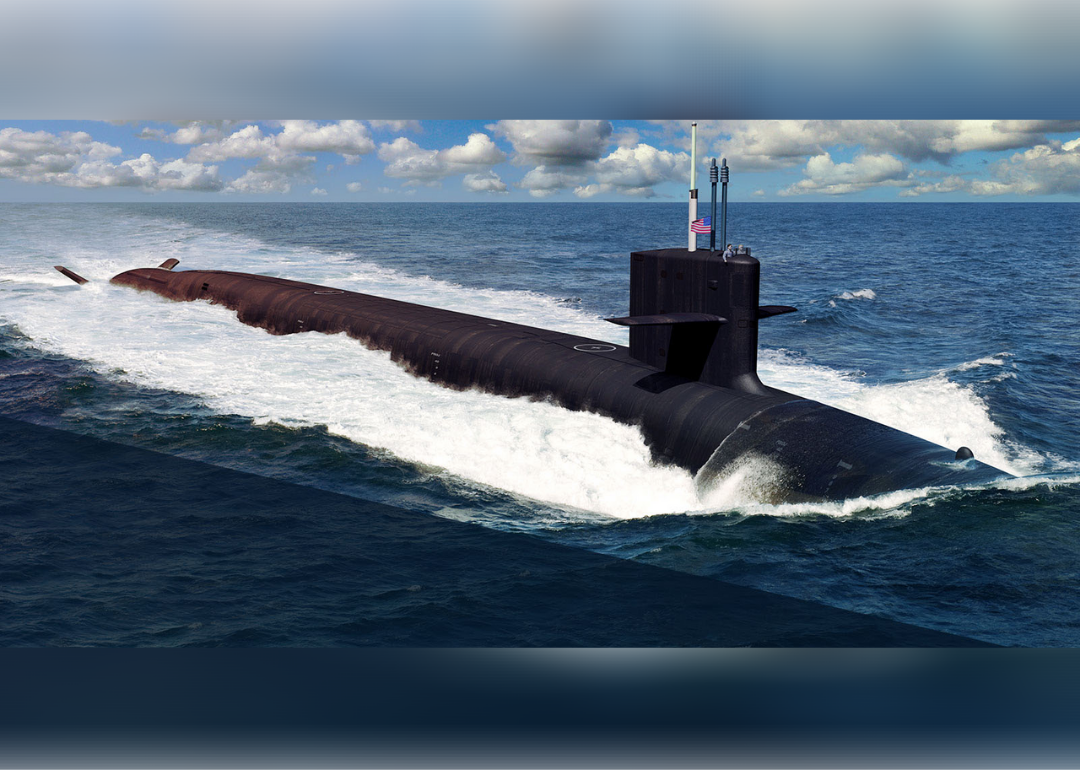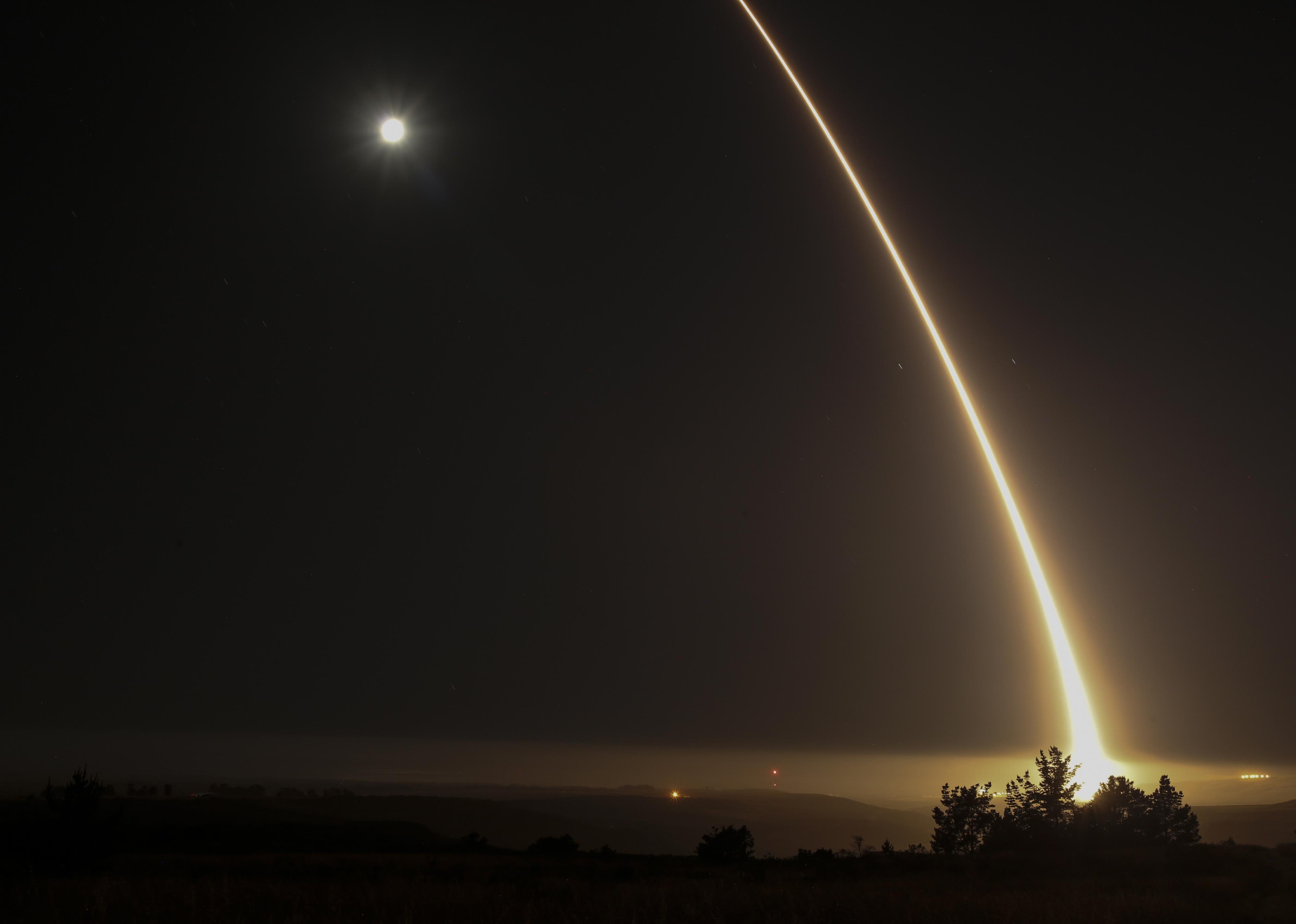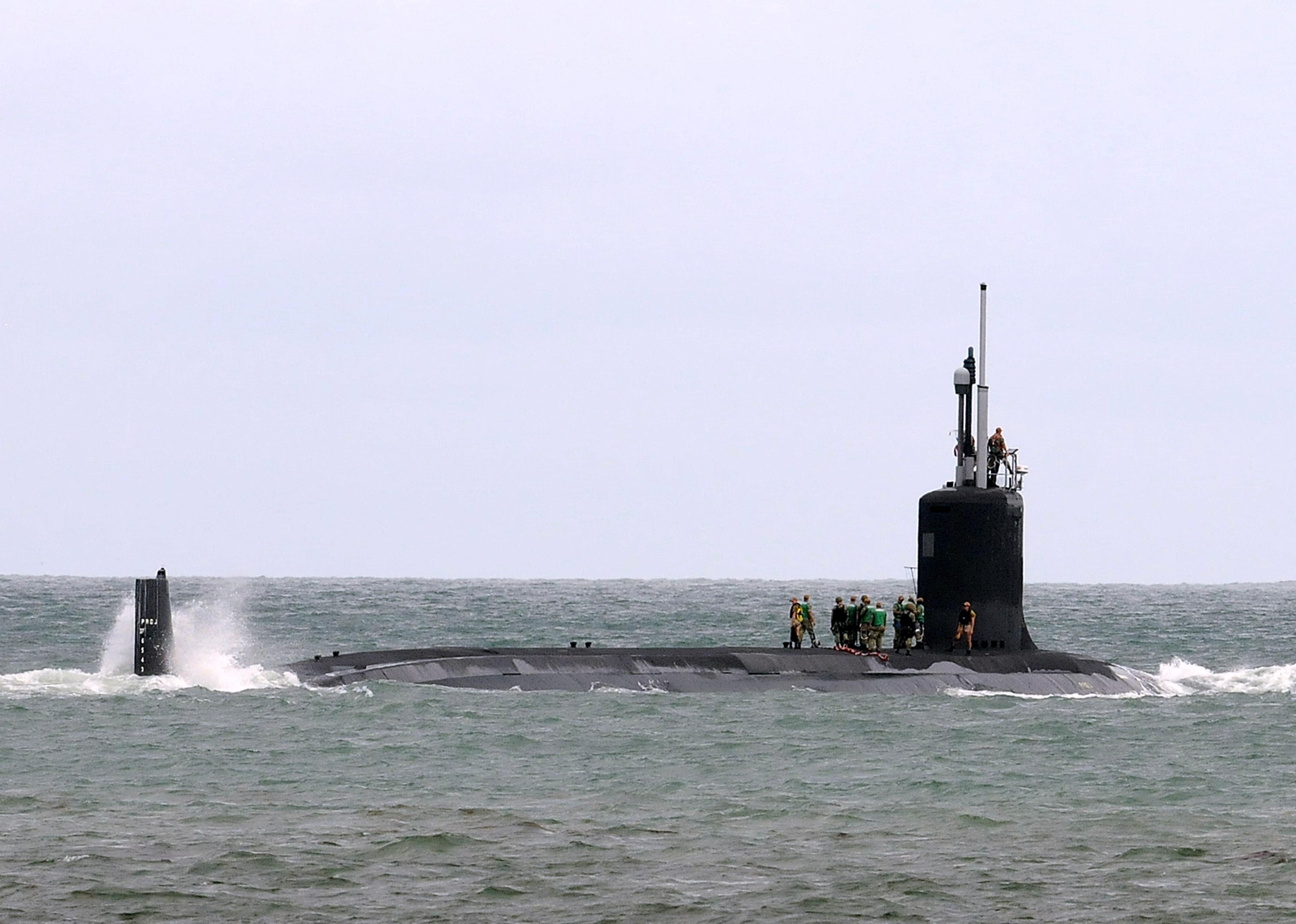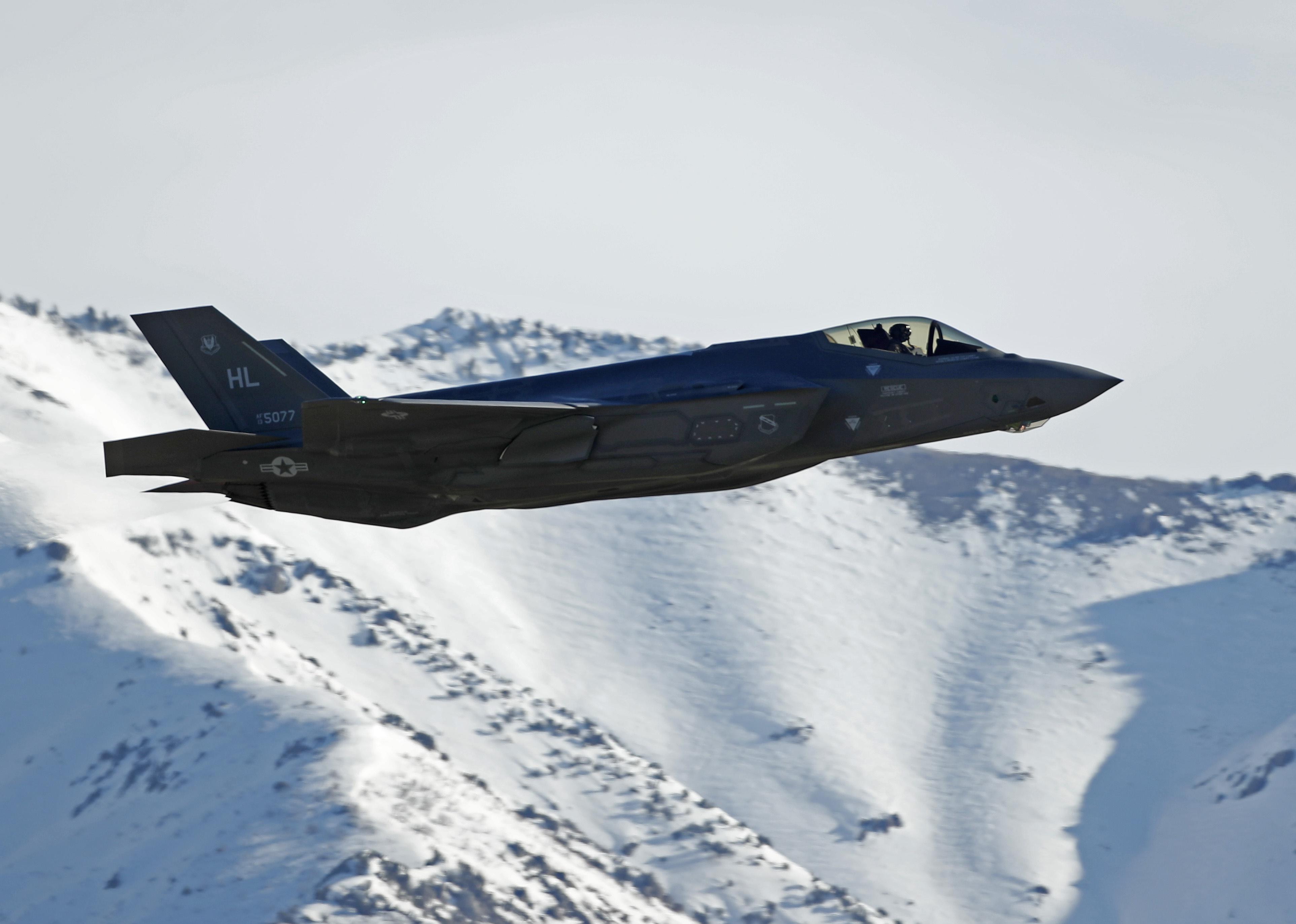Most expensive US military weapons and programs
FREDERIC J. BROWN/AFP // Getty Images
Most expensive US military weapons and programs
The B-21 Raider Stealth Bomber on display with blue lights.
With tax season fast approaching, many Americans are wondering where all the revenue collected by the federal government goes. A good portion of that money will be put toward national defense, which in the popular consciousness usually pertains to weapons and military programs, but in our present era also includes elements such as cybersecurity and climate change.
The national defense budget for 2023 was approved at $816.7 billion, an amount even higher than the request of $773 billion submitted in the budget proposed in March 2022. This is a marked increase over the $715 billion requested the previous year.
Expenditures as outlined within the Defense Department’s budget run the gamut from updating and modernizing existing military equipment to ensuring adequate pay for personnel, nuclear security, and missile defense, to disease response preparedness and cyberspace activities. Events over the last year, such as ongoing COVID-19 pandemic-related measures and tensions with nations such as China and Russia, have exacerbated what the federal government sees as a need for increased defense spending. Staying ahead of threats both foreign and domestic requires massive resources in a rapidly evolving world of technological, social, and environmental changes.
Using data from the Department of Defense’s Fiscal Year 2023 Budget Proposal as submitted on Mar. 28, 2022, Stacker ranked the most expensive military weapons and programs. This budget was signed into law on Dec. 23, 2022.
You may also like: Military medals and what they mean
![]()
The U.S. Army/Ralph Scott/Missile Defense Agency/U.S. Department of Defense // Wikimedia Commons
#23. Terminal High Altitude Area Defense (THAAD) Ballistic Missile Defense
A Terminal High Altitude Area Defense interceptor is launched during a test.
– 2023 Department of Defense budget investment: $335.0 million
– Quantity proposed: not available
– Type of weapon or program: Missile Defeat and Defense
Those who grew up during the Cold War years remember the ever-looming specter of missile attacks. Unfortunately, missile attacks are as much a concern as ever, so the Department of Defense has sunk a sizable sum into a system to intercept and destroy enemy missiles in the atmosphere before they can strike their intended targets.
Black Jack, USAOTC complete testing of new Armored Multi-Purpose Vehicle at army.mil/Author Photo Credit: Maj. Carson Petry (1st CAV) // Wikimedia Commons
#22. Armored Multi-Purpose Vehicles
U.S. Army soldiers testing of the Armored Multi-Purpose Vehicle.
– 2023 Department of Defense budget investment: $381.0 million
– Quantity proposed: 72
– Type of weapon or program: Combat Effective Ground Forces
The rough and reliable M113 armored personnel carrier has served our nation since 1960. Yet all things must modernize to fit a changing world, and with many M113s in service being sent to Ukraine, the U.S. Army is looking to reinforce its armored vehicle fleet with the Armored Multi-Purpose Vehicle. Like the venerable M113, this vehicle will still serve primarily as an armored troop transport, but will also be available to fill roles as mission command, medical vehicles, and artillery carriers.
BRYAN R. SMITH/AFP // Getty Images
#21. Building Pandemic Preparedness
The USNS Comfort medical ship moving up the Hudson River past the Statue of Liberty.
– 2023 Department of Defense budget investment: $468.0 million
– Quantity proposed: not available
– Type of weapon or program: Building Pandemic Preparedness
While the United States has long been at the forefront of disease research and prevention with institutions such as the Centers for Disease Control and Prevention, COVID-19 rocked the way many people view disease and infection preparedness worldwide. Consequently, there has been an increase in spending in the field of biological defense, which not only combats the use of bioweapons, but also the threat presented by naturally occurring and transmittable infections, the likes of which are being combated by vaccine development and pathogen containment.
The Mariner 4291 // Shutterstock
#20. Amphibious Combat Vehicles
An amphibious vehicle on the shore.
– 2023 Department of Defense budget investment: $631.0 million
– Quantity proposed: 74
– Type of weapon or program: Combat Effective Ground Forces
The Amphibious Combat Vehicle is intended to replace the Amphibious Assault Vehicle that has served for over four decades. While the AAV is a tracked vehicle, the ACV is wheeled and designed to travel faster. The program was paused for 10 months after a fatal training incident in 2020, but the ACV is on track (no pun intended) to replace the remaining AAVs by 2026.
STR/JIJI PRESS/AFP // Getty Images
#19. PATRIOT Advanced Capability – 3 (PAC-3) Missile Segment Enhancement
A PAC-3 missile is transported on a truck.
– 2023 Department of Defense budget investment: $1.0 billion
– Quantity proposed: not available
– Type of weapon or program: Missile Defeat and Defense
The PATRIOT Advanced Capability 3 missile system is another missile defense system, but this one is a mobile surface-to-air platform capable of intercepting shorter-range missiles and rockets aimed at critical targets or personnel as opposed to intercontinental ballistic missiles. A new development named Missile Segment Enhancement will give the existing platforms increased responsiveness and guidance controls and expand operational abilities.
You may also like: 50 best movies about the Vietnam War
Sebastian Saarloos // Wikimedia Commons
#18. Joint Light Tactical Vehicles
A tan tactical vehicle with snow chains on the wheels.
– 2023 Department of Defense budget investment: $1.1 billion
– Quantity proposed: 3721
– Type of weapon or program: Combat Effective Ground Forces
Even with the increased role of technology in warfare, a great share of the fighting will still require troops on the ground. Effective ground-based forces require mobility, so Oshkosh Defense is providing the armed forces with the Joint Light Tactical Vehicle to replace a portion of the Humvees that have been in service for several decades. And no, the people riding in them will not be wearing kids’ overalls.
U.S. Navy graphic/Released // Wikimedia Commons
#17. Frigate (FFG-62)
An artist rendering of the U.S. Navy guided-missile frigate FFG(X).
– 2023 Department of Defense budget investment: $1.3 billion
– Quantity proposed: 1
– Type of weapon or program: Modernized Naval Forces
The Navy is looking to modernize its fleet with the commission of 20 frigates to use as guided missile ships. In 2020, the project was formally named FFG-62 and designated as the Constellation Class with the goal of having the first ship seaborne by 2026.
Kevin Dietsch // Getty Images
#16. Launch Vehicles – National Security Space Launch (NSSL) and Rocket System Launch Program (RSLP)
SpaceX’s Falcon 9 rocket with the Dragon spacecraft atop takes off at NASA’s Kennedy Space Center in Cape Canaveral, Florida.
– 2023 Department of Defense budget investment: $1.6 billion
– Quantity proposed: 6
– Type of weapon or program: Space and Space-Based Systems
Not even the best militaries in the world are functional without information, and satellites are a huge part of modern communications. Therefore, the Pentagon has commissioned six launch vehicles to add to its capabilities for launching satellites, orbiters, and probes for the purposes of communications, location detection, and meteorology.
U.S. Air Force // Getty Images
#15. NGAD (Air Force)
The B-2 Stealth Bomber flies over an Air Force base.
– 2023 Department of Defense budget investment: $1.7 billion
– Quantity proposed: not available
– Type of weapon or program: Lethal Air Forces
The B-2 Spirit, also known as the Stealth Bomber, was a revolutionary aircraft when it debuted in 1989. Over 30 years later, the Air Force is entering into the sixth generation of its Next Generation Air Dominance program. What the new aircraft will look like remains to be seen, as the program is highly secret and classified.
Gallo Images/Orbital Horizon/Copernicus Sentinel Data 2022 // Getty Images
#14. Global Positioning System (GPS) Enterprise
A GPS satellite image of a lake in Utah.
– 2023 Department of Defense budget investment: $1.8 billion
– Quantity proposed: 2
– Type of weapon or program: Space and Space-Based Systems
Like many technologies prevalent in daily life, GPS began as a military endeavor. The current GPS enterprise consists of three components: the space segment, which is comprised of orbital satellites; the control segment, which consists of operational monitoring; and the user segment, which is comprised of the receivers that an end user utilizes to translate locational information.
You may also like: 105 years of military history
Al Seib/Los Angeles Times // Getty Images
#13. Ground-Based Midcourse (GMD) and Improved Homeland Defense/Next Generation Interceptors (NGI)
A faraway image of a ground based interceptor launch.
– 2023 Department of Defense budget investment: $2.6 billion
– Quantity proposed: not available
– Type of weapon or program: Missile Defeat and Defense
If it seems that missile defense is redundant on this list, that’s because there are many aspects to it. The Ground-Based Midcourse and Next Generation Interceptors are on another level when it comes to providing the Missile Defense Agency with a fail-safe missile defense network.
Sam Morris/LVMS/Icon Sportswire // Getty Images
#12. F-15EX
An F-15 approaching to land with an American flag in the foreground.
– 2023 Department of Defense budget investment: $2.8 billion
– Quantity proposed: 24
– Type of weapon or program: Lethal Air Forces
The F-15 aircraft platform has been serving the Air Force since 1974, so it is certainly due for an upgrade for the modern era. While the U.S. has provided F-15s to many allied nations, the newer F-15EX will have upgrades such as reinforced airframes, more powerful onboard technology, and the Eagle Passive Active Warning Survivability System. The new aircraft will be compatible with much of the technological infrastructure for the current F-15s, allowing the craft to be worked into service with minimal operational disruption and upgrade cost.
GIUSEPPE CACACE/AFP // Getty Images
#11. KC-46 Pegasus
The KC-46 Pegasus airplane parked on a runway.
– 2023 Department of Defense budget investment: $2.9 billion
– Quantity proposed: 15
– Type of weapon or program: Lethal Air Forces
The Air Force cannot operate without fuel. Designed off of Boeing’s long-enduring 767 chassis, the KC-46 Pegasus is an update to aircraft capable of fueling other planes in midair. In November 2022, a KC-46 was able to stay airborne for 36 hours and circumnavigate the globe for 16,000 miles on a single mission without having to touch down.
Melissa Sue Gerrits // Getty Images
#10. Addressing the Climate Crisis
U.S. Army soldiers walking in a line.
– 2023 Department of Defense budget investment: $3.1 billion
– Quantity proposed: not available
– Type of weapon or program: Climate Change
Climate change is not typically regarded as a threat that can be tackled through conventional defense, but the DOD has acknowledged that it will be destructive to existing defensive infrastructure and equipment. Installations in changing environments or areas with rising sea levels will experience accelerated structural degradation, equipment specific to certain environments will have to be altered, and there is a looming threat to the health of personnel. The Pentagon has obtained funds to enact a Climate Adaptation Plan to combat these natural threats to national security.
While tackling the climate crisis is seen by many as crucial work, critics often point out the extent to which the United States military itself contributes to climate change. A 2019 study from Brown University found that the DOD is the world’s largest institutional producer of greenhouse gases, contributing more emissions than many industrialized nations.
U.S. Air Force // Wikimedia Commons
#9. LGM-35A Sentinel Weapon System
Concept rendering of the U.S. Air Force’s LGM-35A intercontinental ballistic missile in the sky.
– 2023 Department of Defense budget investment: $3.6 billion
– Quantity proposed: not available
– Type of weapon or program: Nuclear Enterprise Modernization
The LGM-35A Sentinel Weapon System is the Air Force’s replacement for the Minuteman III Intercontinental Ballistic Missile system after over 50 years of service. It is also the ground-based portion of the defensive network known as the Nuclear Triad, which provides nuclear missile defense from ground, sea, and air.
You may also like: 100 actors who served in the military
US Air Force // Wikimedia Commons
#8. Space-based Overhead Persistent Infrared (OPIR) Systems
An illustration of SBIRS from earth to space.
– 2023 Department of Defense budget investment: $4.7 billion
– Quantity proposed: not available
– Type of weapon or program: Space and Space-based Systems
In the event of a missile attack, the Space-based Overhead Persistent Infrared System is the first line of defense in detecting the incoming threat. It accomplishes this through a network of orbital satellites that relay information to Air Force Space Command and NORAD. This system will replace the existing Defensive Support Program satellites which have been orbiting since the 1970s.
Eliyahu Yosef Parypa // Shutterstock
#7. B-21 Raider
– 2023 Department of Defense budget investment: $5.0 billion
– Quantity proposed: not available
– Type of weapon or program: Nuclear Enterprise Modernization
The B-21 Raider is the Air Force’s next-generation bomber. Five units are currently in production, and details on the final craft are still classified.
U.S. Navy photo by Journalist 2nd Class Patrick Reilly // Wikimedia Commons
#6. DDG-51 Arleigh Burke Class Destroyers
A DDG-51 destroyer ship on the water.
– 2023 Department of Defense budget investment: $5.6 billion
– Quantity proposed: 2
– Type of weapon or program: Modernized Naval Forces
The DDG-51 was first commissioned in 1991 and has remained in service and production since then. During that time, four variants or “flights” have been designated for the 124 boats in service. The 125th and 126th boats will be upgraded to the Flight III configuration, with subsequent builds to follow this modernized configuration.
U.S. Naval Systems Command Image // Wikimedia Commons
#5. Columbia Class Ballistic Missile Submarine
A submarine just above the water line in the ocean.
– 2023 Department of Defense budget investment: $6.3 billion
– Quantity proposed: not available
– Type of weapon or program: Nuclear Enterprise Modernization
A fact of naval warfare acknowledged for quite some time is that a truly effective navy must operate both above and below the surface. Submarines are highly specialized vehicles, and the Ohio-class boats that have served the nation are beginning to show their age. To replace them, the Navy has commissioned twelve Columbia-class submarines to maintain submarine operations.
RINGO CHIU/AFP // Getty Images
#4. Funds to procure highly survivable, precision-strike, and long-range fires—from hypersonic to subsonic—across the joint force
A streak of light in the night as a test missile goes across the sky.
– 2023 Department of Defense budget investment: $7.2 billion
– Quantity proposed: not available
– Type of weapon or program: Long Range Fires
The most deadly and destructive munitions are useless without the ability to reach their targets. The Army is looking to extend its long-range firing capabilities by enhancing and improving a diaspora of weaponry from missiles to artillery and cannon fire to extend their effective ranges and accuracy.
You may also like: Where US military aid is being spent, ranked
Paul Hennessy/NurPhoto // Getty Images
#3. Virginia Class Submarines
People standing on top of a virginia class submarine as it floats just above the water line.
– 2023 Department of Defense budget investment: $7.3 billion
– Quantity proposed: 2
– Type of weapon or program: Modernized Naval Forces
The Virginia-class submarine has been in service since 1998, and as of 2022, the Navy has procured 36 of the boats. For 2023, they are looking to add two more of them to the fleet to keep numbers operational as the older Los Angeles-class boats begin to reach operational retirement.
George Frey // Getty Images
#2. F-35 Joint Strike Fighter
An F-35 jet flying over snowy mountains.
– 2023 Department of Defense budget investment: $11.0 billion
– Quantity proposed: 61
– Type of weapon or program: Lethal Air Forces
Many who grew up in the 1980s recall the iconic imagery of F-14 Tomcats blazing through the skies in “Top Gun.” The Air Force is still riding the highway to the danger zone with the F-35. This fifth-generation fighter contains some of the most advanced technology available in terms of stealth, communication, and survivability, along with an extended material duration that will grant these planes an increased service lifespan. (In fact, this model made a brief cameo in “Top Gun: Maverick” aboard an aircraft carrier, though it sadly was never filmed in flight.)
JIM WATSON/AFP // Getty Images
#1. Increasing cybersecurity and operationalizing Zero Trust Architecture
Cybersecurity analysts sit in rows on computers.
– 2023 Department of Defense budget investment: $11.2 billion
– Quantity proposed: not available
– Type of weapon or program: Cyberspace Activities
In the modern era, cyberspace is as much a battleground as the physical theater of war. The most advanced technology relies on digital operations for everything from operation to communication, and a fighting force can meet catastrophic failure if its technical capabilities are compromised. Therefore, the nation’s digital infrastructure is being reinforced from devices to applications and cloud-based storage utilizing zero trust architecture to ensure that critical information cannot be compromised.
